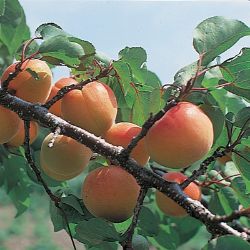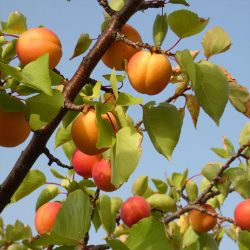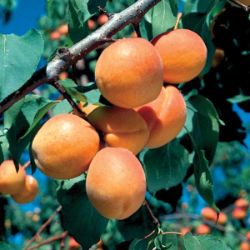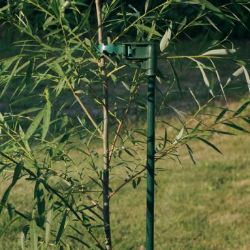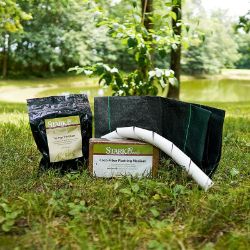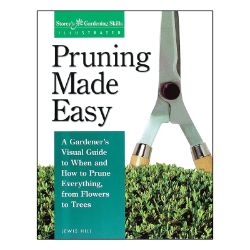How to Acclimate Apricot Trees
Acclimate (ac·cli·mate): "To become accustomed to a new climate or to new conditions. Also to harden off a plant."
Acclimating apricot trees helps minimize environmental stress when planting. Because our potted apricot trees are grown in our controlled greenhouse environment, they may arrive to you already sprouting tender new growth. This growth can be sensitive to things like:
- Temperature (below 50ºF or above 90ºF)
- Frost snaps
- Strong/direct sunlight
- Wind
NOTE: This is part 2 in a series of 11 articles. For a complete background on how to grow apricot trees, we recommend starting from the beginning.
Acclimating Bare-Root Trees
Allow your tree’s roots to soak in water an hour or two before planting. Do not soak the roots for more than 24 hours.
Bare-root trees are not grown in a pot and will not have any soil around their roots – hence the name “bare root”. Our bare-root trees are shipped dormant, which helps them to transplant well and experience less transpiration (water loss) immediately after planting. The best thing you can do for a new tree is to avoid shock as much as possible, so don’t wait until it’s too late in the season to plant. The best time to plant a bare-root tree, or any other bare-root plant, is in the fall or early spring.
Acclimation Steps for Potted & Bagged Trees
If you receive new plants or trees from Stark Bro’s in a pot that have already begun to grow tender, leafy foliage, it’s likely that they were cultivated in our greenhouses. To ensure these plants and trees are acclimatized (or hardened off) before planting outdoors, we recommend following these steps:
- Once your plants and trees arrive, unbox them and leave them in the pots or grow bags they arrived in. Place them in a semi-shaded spot outdoors, such as a back porch, for a day or so. Then, move them to a sunnier area. While you should water your plants upon arrival, it’s also essential to allow the soil to dry out to promote the hardening-off process.
- Keep an eye on the foliage; if you notice signs of leaf injury before planting, move those plants or trees to a more shaded area with filtered sunlight and protection from harsh winds. Adequate air movement is crucial for hardening off the plant outdoors. Cool air helps toughen the tender new growth, but bring plants back inside at night if temperatures are expected to drop to or below freezing.
- After acclimating your plants and trees for 2-3 days, and if the weather conditions are suitable, you can plant them in their permanent location outdoors. Your new plants and trees should be able to handle conditions, provided that soil temperatures remain above 50ºF. Planting on a cloudy day will typically yield the best results.
It’s worth noting that these are general recommendations. Your specific growing environment may require some slight adjustments to these guidelines since different plants may take more or less time to harden off. External factors such as weather conditions, individual plants, and your location can also impact the process. If outdoor conditions are too harsh, it’s best to keep your potted plants near a sunny window, water them, and treat them like houseplants. You can then begin the process of hardening off your plants when the weather improves.













